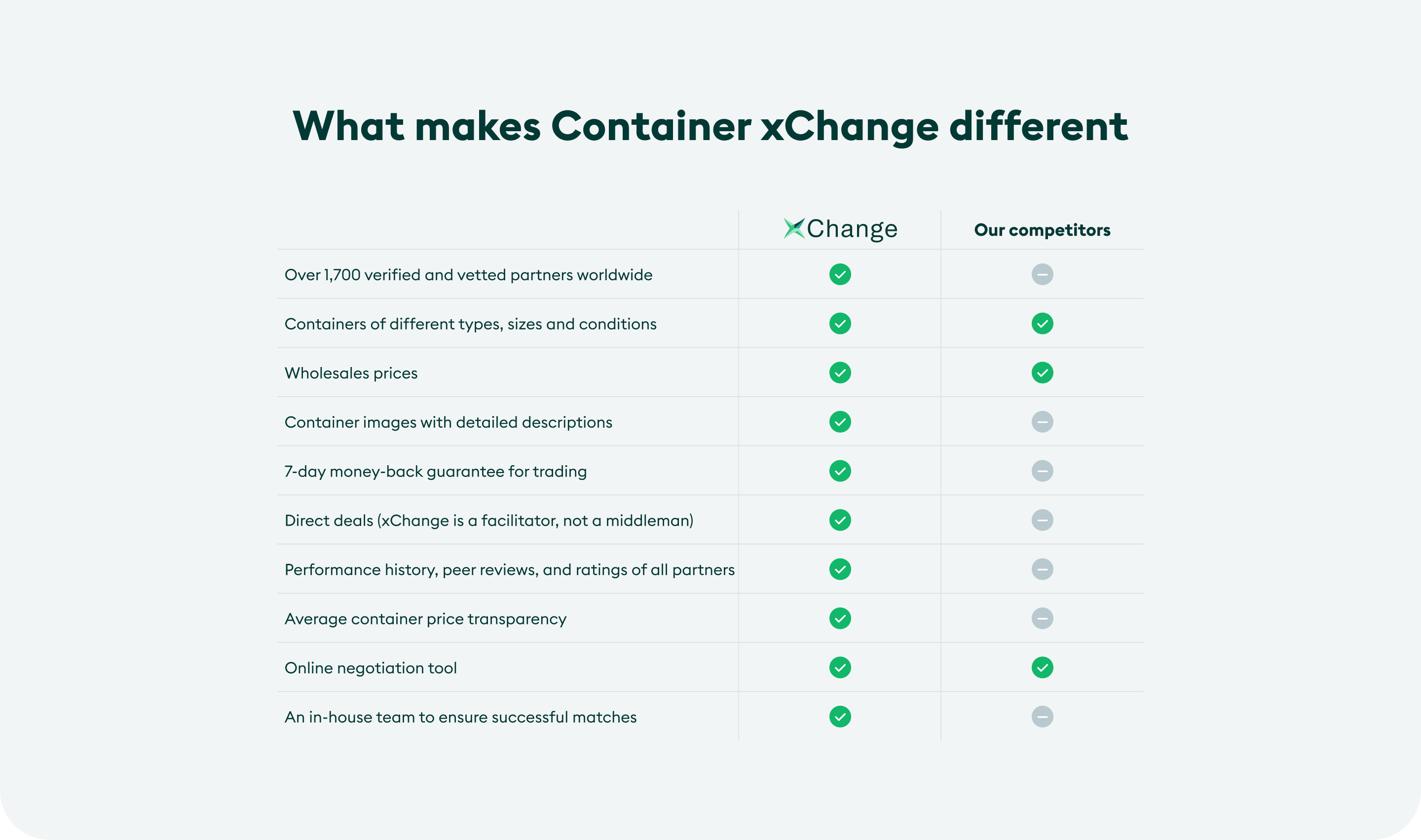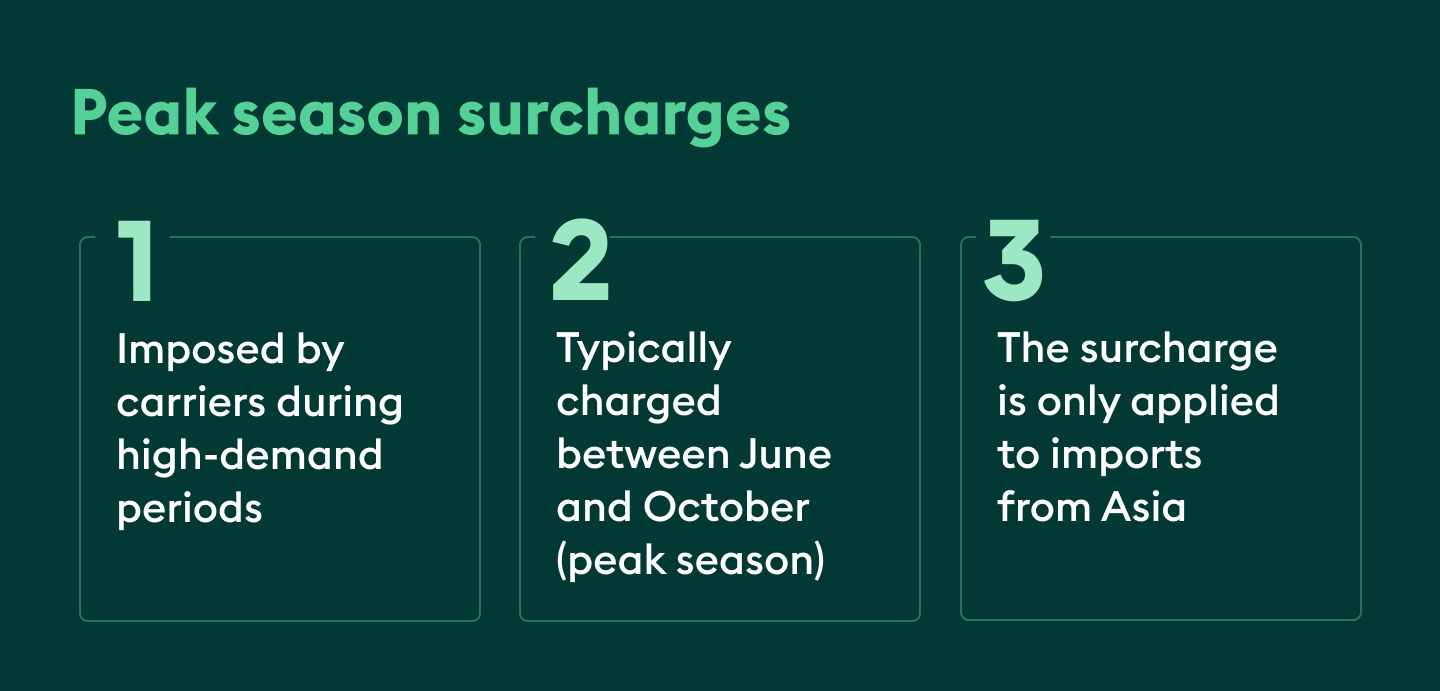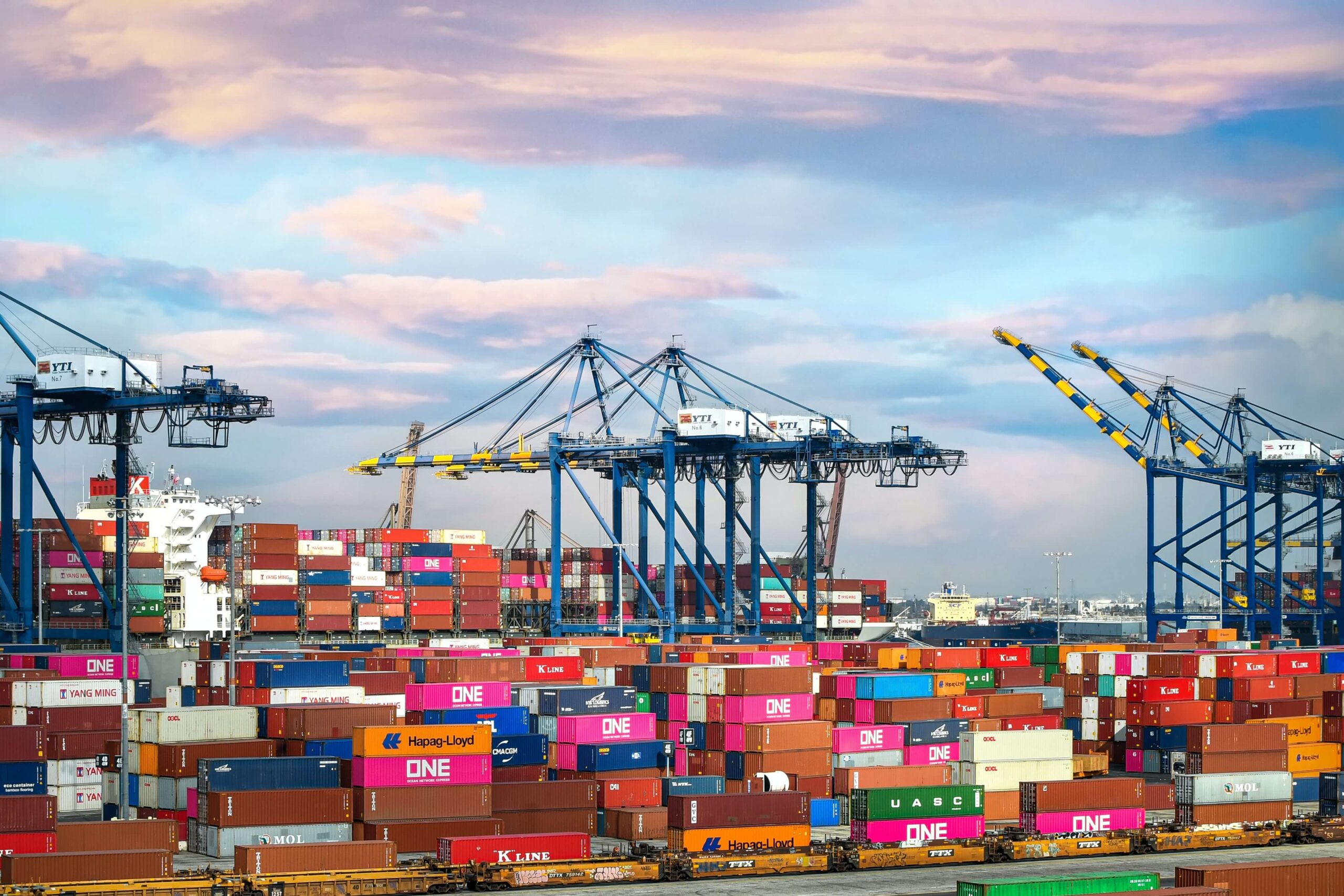The peak season surcharge is essential for carriers and logistics businesses during periods of high demand in the shipping industry. Luckily, there are ways to reduce these charges and even avoid some of them altogether. Read this blog for the full lowdown.
Every year, businesses and consumers around the world experience a familiar cycle of increased demand, higher prices, and heightened activity known as peak season.
As a shipper, this time of year can come with a lot of anxiety as you prepare for delays in your shipments, increased freight rates, and extra charges. It’s no surprise that peak season can have a significant effect on your strategy and spending.
If finding good container leasing deals and reliable partners to work with at this time of year leaves you tearing your hair out, you’re not alone.
But the good news is, there are ways to reduce costs during peak season—with Container xChange. We’re the largest global container marketplace, with 1,700+ vetted partners to work with in over 2,500 locations worldwide. On our platform, you can negotiate deals that suit your budget and avoid unnecessary port charges.
Check out our platform to find leasing offers that fit your requirements today.
25 x 40HC
Container Supplier
Container Company Blurred Name
5
Pick-up charge
User pays
$120
19 Freedays
$44.20 Per diem
What is peak season surcharge?
Before we talk about the peak season surcharge (PSSWhat is peak season surcharge? Peak Season Surcharge, or PSS, is the additional charge imposed on the base freight rate or regular shipping fees when there is high demand in the supply chain network. ... More), it’s important to understand what is considered a peak season.
Peak season in shipping refers to specific times of the year when shipping demand is significantly higher than usual, leading to increased cargo traffic. This usually results in longer transit times, higher shipping rates, and additional freight charges.
In the shipping world, peak season usually starts around August and runs until October, although this may vary significantly from year to year.
The peak season surcharge (PSSWhat is peak season surcharge? Peak Season Surcharge, or PSS, is the additional charge imposed on the base freight rate or regular shipping fees when there is high demand in the supply chain network. ... More) is one such additional fee imposed by carriers or logistics companies during periods of high demand. This fee is charged in order to cover increased operational costs associated with handling larger shipping volumes.
4 main peak season events in a year
August to October (pre-holiday peak): This is usually the busiest period of the year for international shipping, especially for imports to North America and Europe. Retailers stock up on inventory ahead of events like Black Friday, Cyber Monday, and Christmas.
Golden Week, a holiday that takes place from 1 to 7 October in China, also means that factories shut down for a week. This causes a surge in demand before the holiday week, port congestion, delays, and a significant rise in freight rates. Read more about the Golden Week.
November to December (holiday shopping): High shipping volumes continue as consumers order goods for the holiday season.
Chinese New Year (January to February): A significant peak in shipping takes place before the Chinese New Year, as factories rush to finalize orders before closing for the holiday. Shipping volumes surge in the weeks leading up to this holiday as companies try to ship goods out of China in time.
Back-to-School Season (June to August): Between June and August, we see an increase in demand for school supplies, electronics, and apparel, leading to heightened shipping activity, particularly for consumer goods around this time of year.
How surcharges influence shipping costs
Surcharges significantly impact shipping costs by adding fees on top of base shipping rates to cover extra operational expenses or external factors. These surcharges typically affect businesses shipping large volumes of goods.
Here are some of the main reasons that surcharges are added during peak season:
- Higher fuel consumption due to higher shipping volumes
- Additional labor required to handle delivery surges
- Increased equipment usage
- Port congestion, which leads to higher storage costs
Now, let’s take a look at some peak season surcharges for 2024 and 2025.
Peak season surcharges: November 2024 to January 2025
UPS is a US-based multinational shipping and supply chain management company serving in 200+ countries worldwide. Their 2024 and 2025 peak season surcharges are as follows:
September 29, 2024 to November 23, 2024
- Additional handling: $7.75
- Large package surcharge: $84.75
- Over max limits: $445
November 24, 2024 to December 28, 2024
- Additional handling: $9.95
- Large package surcharge: $99
- Over max limits: $495
December 29, 2024 to January 18, 2025
- Additional handling: $7.75
- Large package surcharge: $84.75
- Over max limits: $445
FedEx is an American multinational focused on transportation, e-commerce and business services. With Fedex, you’re looking at the following peak surcharges for ground shipping:
September 30, 2024 to January 19, 2025
- Additional handling (US package services, FedEx international ground shipments): $7.75 to $10
- Oversize charge (US package services, FedEx international ground shipments): $84.50 to $100
October 28, 2024 to January 19, 2025
- Demand surcharge (First Overnight, Priority Overnight, Standard Overnight, 2Day, 2Day AM, Express Saver): $1 to $2
- Demand surcharge (FedEx Ground residential shipments, FedEx Home Delivery residential shipments): $0.30 to $0.55
- Demand surcharge (FedEx Ground Economy Package Services): $1.90 to $3.15
Early peak season brings record container volumes to Port of Los Angeles in 2024
The US West Coast Port of Los Angeles handled 939,600 TEUs in July 2024. This is up 37% from July 2023 and an all-time record for the month. In the first seven months of 2024 alone, the port of Los Angeles handled 5.67 million TEU, up 18% year-on-year.
Gene Seroka, Executive Director of the Port of LA, was quoted saying, “We’re now seeing an influx of year-end holiday goods coming across our docks a bit earlier than usual. Importers have told me with issues in the Red Sea and ongoing East Coast labor talks they are being extra cautious this year.”
Reflecting this early peak season, loaded imports at the Port of LA were up 38% in July at 501,281 TEUs. Loaded exports were up 4% at 114,889 TEUs.
This major port also handled 323,431 TEUs of empty containers in July, a jump of 54% compared to the same month in 2023.
Other shipping charges to be aware of
Besides peak season surcharges, there are quite a few other shipping charges to keep in mind. Check them out below:
Handling fees: This fee covers manual labor or special handling required to load, unload, or process certain types of cargo.
Customs clearance: This is charged by the shipping company or customs broker to handle the paperwork and clearance of international shipments through customs.
Storage fees: Storage fees are charged when a container is held at a warehouse or port for longer than a set period (usually 48 hours or more). If congestion at ports is severe, these fees can start to pile up.
Import duties and taxes: Import duties and taxes are charged for goods entering a country, based on the value and type of cargo being carried.
Overweight fees: These are charged on shipments that exceed the size and weight restrictions imposed by carriers.
Demurrage and detention: D&D charges are imposed when shipping containers are not moved out of a port or terminal within the allotted free time.
How to avoid peak season surcharge
As you can see, there are a lot of fees to contend with as a shipper moving goods around peak season. But what if we told you there’s an easy way to avoid some of these fees altogether?
Some of the best strategies include booking shipments well in advance, communicating with partners regularly, shipping FCL (full container load), and using a trusted supplier network.
And with Container xChange, you can completely dodge demurrage and detention charges too. Here’s how.
On our marketplace, lease SOCs (Shipper Owned Containers) from vetted suppliers for one-way moves. SOCs, unlike COCs are not operated by shipping lines. Thus, you won’t be liable to shell out on port charges if your containers get stuck at ports during busy periods.
So, by bringing your own containers instead of using the carrier’s units, you avoid D&D charges altogether.
With xChange, you’ll be able to select which supplier you’d like to work with, as well as the rates, terms, and conditions you’re comfortable with.
Settling on the per diem and free days before the container is shipped means avoiding any nasty surprises later on. Click the banner below to find out more about how you can lease SOCs and save cash for your business with us today.
Dodge surcharges and port charges with Container xChange
Finally, you can stay one step ahead during peak season and save money for your business by subscribing to our platform. Here are some of the benefits you’ll enjoy:

Access 100,000+ containers in 2,500 locations: On Container xChange, you can find containers of all types and sizes in all major locations around the world. So say goodbye to the struggle of finding extra units during peak times, and hello to easily accessing the containers you need at any time of year.
Work with 1,700+ trusted industry partners: Finding partners you can trust becomes increasingly difficult during peak periods. However, on xChange, you can easily connect with partners that we’ve already vetted and save valuable time.
Find matching offers instantly: Once you’ve inputted your criteria, you’ll be able to see a list of offers that match your requirements in one place. So that you can easily compare options and choose the best option for your business, all under one platform.
Negotiate prices and rates directly with suppliers: On our marketplace, you can reach out to suppliers directly to negotiate the rates, per diem charges, and free days that suit your needs. No middlemen wasting your valuable time and charging commission.
Pay quickly and safely: Once you’ve finalized a deal with the supplier of your choice, you can pay safely right on the platform with our safe payment feature. All payments are encrypted for an extra layer of security.
With us as your partner, you’ll finally be able to sail through peak season worry-free and save on pesky extra fees.
So what are you waiting for? Get started right away by clicking on the banner below to see our platform live and learn how to streamline shipping operations even in the busiest seasons.
Peak season surcharge: Common FAQs
What is a peak season surcharge?
The peak season surcharge is a fee imposed by a carrier or logistics company during periods of high demand in the shipping industry. This is to offset extra costs such as excess fuel, extra labor, storage costs, and port congestion during peak times.
Can peak season surcharges be avoided?
Peak season surcharges can be avoided to some extent by planning shipments in advance and leasing Shipper Owned Containers (SOCs) to dodge demurrage and detention fees at ports.
When is peak season in shipping?
Peak season in shipping usually falls between August and October each year. Peak season is the busiest period for international shipping, especially for imports to North America and Europe. During this period, retailers stock up on inventory ahead of events like Black Friday, Cyber Monday, and Christmas.






